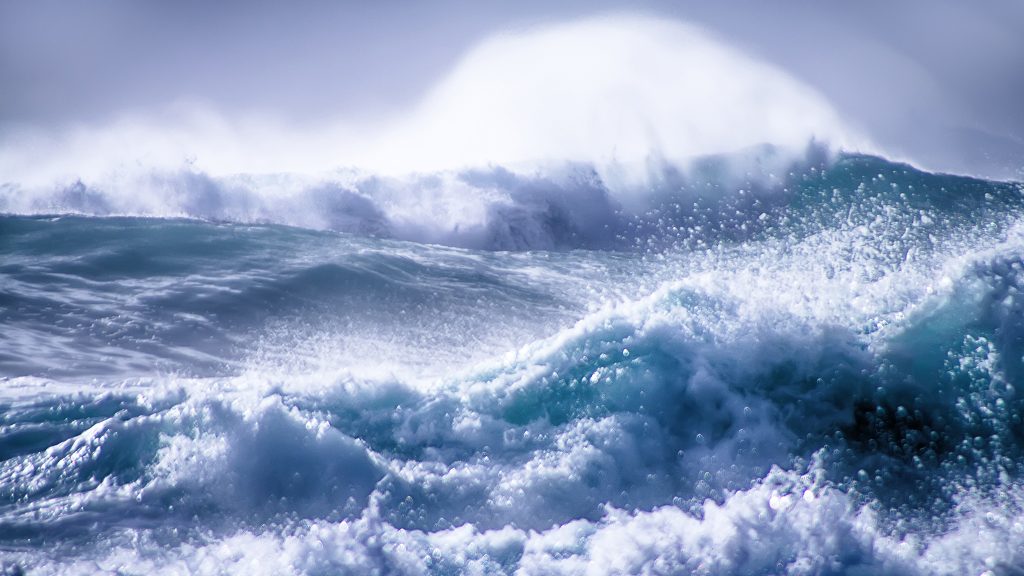Rogue waves are waves in open waters that are larger than the surrounding waves. They can cause damage to water vessels. They are caused when the currents or winds, or both, begin to travel at various speeds whereby the waves merge and create one single wave, or when nonlinear effects cause the energy to move between the waves and create an extremely large wave. Rogue waves have now been proven to exist and are ocean phenomena. In 1984, at a Gormplatform in the North Sea, a standout wave was spotted with a height of 36 feet. The scientific community caught the attention of the digital measurement of a rogue wave at the Draupner platform in the North Sea on January 1, 1985, and recorded a maximum wave height of eighty-four feet. At this event, there was minor damage to the platform above sea level, revealing the accuracy of the wave-height reading, which was made by a downward-pointing laser sensor. Video and photographs, satellite imagery, radar of the ocean surface, and stereo wave imaging systems have verified their existence.

In 2000, a British oceanographic research vessel, “RRS Discovery,” while in the Rockall Trough, west of Scotland, came upon the largest waves recorded. The height was sixty-one feet, and individual waves up to ninety-five feet. In 2004, the European Space Agency Satellites reported ten rogue waves at 82 feet or higher. A rogue wave is not caused by land movements, and it only lasts briefly, occurs in a limited location, and is found far out at sea. They are rare but dangerous since they can form massive waves beyond the expectations of shipbuilder designs and can be overbearing in the abilities of ocean vessels that are not designed for such stresses.
Rogue waves are well-documented. The freighter “MS Munchen” was lost in 1978, as well as the “Ocean Ranger,” which was a semi-submersible mobile offshore drilling unit that sank in the Canadian waters on February 15, 1982.
In oceanography, rogue waves are defined as waves that have a height of more than twice the significant height, which is defined as the mean of the largest third of waves in a wave record. They occur due to high winds as well as strong currents that cause waves to merge and create a single large wave.
Rogue waves are now accepted as a common phenomenon. Professor Akhmediev from the Australian National University said that 10 rouge waves do exist in the world’s oceans at any moment. They can also occur in lakes. A name was given: “Three Sisters.” It occurred in Lake Superior when a series of three large waves formed. The second wave hit a ship’s deck before the first one cleared. The third wave added to the two accumulated backwashes and overloaded the ship deck with large amounts of water. This was one of the theorized outcomes of the sinking of the “USS Edmund Fitzgerald” on Lake Superior in November 1975.
Early reports:
In 1826, a scientist and naval officer, Jules Dumont d’Urville, said there were waves as high as 108 feet in the Indian Ocean, and he had three colleagues there as witnesses, but he had been ridiculed publicly by another scientist, Francois Arago. During those times, the thought of any wave being so high was not possible, and no wave could exceed thirty feet. The disbelief resulted in the fact that there were very few people who had ever seen a rogue wave and lived until double-hulled ships were built in the 20th century. Those who encountered 100-foot waves rarely came back to talk about it.
